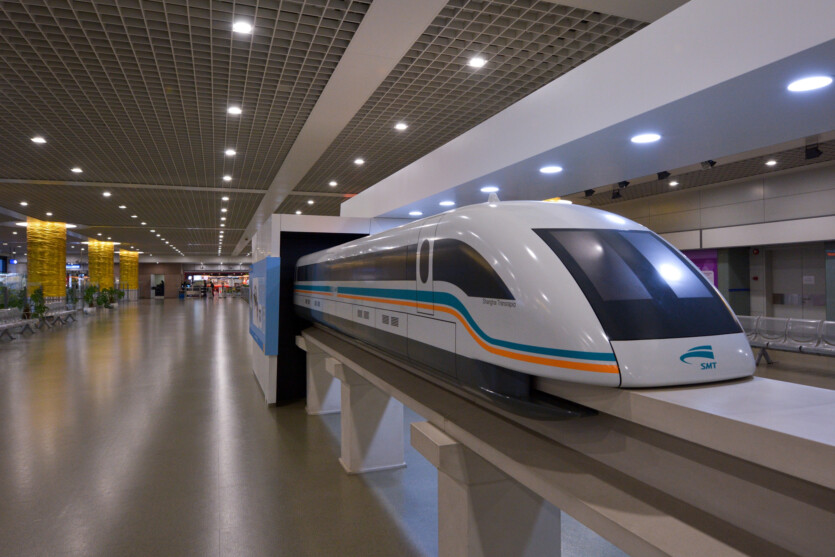
Chinese researchers have dispersed prototype of a train on magnetic suspension to a record 650 km/h in seven seconds.
The tests were conducted on a demonstration track of about a kilometer in length at the Donghu laboratory in Hubei Province. The developers combined a powerful linear motor with magnetic levitation.
Due to the fact that the wheels of the train do not come into contact with the rails, the main obstacle on the way to a significant increase in speed only aerodynamic resistance acts. Maglev provides the train with extreme acceleration and tightly controlled inhibition.
According to the Chinese media, the braking distance of the train at maximum speed is only 200 meters. At the same time, the developers note that the test site itself was created for scheduled tests of a maglev train that will accelerate to 800 km/h after construction is completed and put into operation at the end of this year.
Traditionally, high-speed train testing programs use straight sections of 30 km or more to maximize acceleration and acceleration for prototypes. However, the Chinese researchers used millimeter-scale sensors, electronics and variable frequency drives, as well as a specially designed aerodynamic cowling to achieve cruising speeds on a section of just one kilometer.
It also allows researchers to develop a more advanced power electronics cooling system, fault-tolerant maglev coils, and create low-drag railcar shapes. China has already taken the lead in the use of maglev trains, overtaking South Korea and Japan. Shanghai’s maglev train, built on the basis of German Transrapid technology and opened in 2004, still carries passengers at 430 km/h.
By demonstrating controlled acceleration at 650 km/h on a one-kilometer track, the Donghu laboratory demonstrated the effectiveness of a compact test bed that is promising for the next generation of high-speed railways. If the program reaches its planned speed of 800 km/h by the end of this year, it will close the gap between conventional open magnetic levitators and low-vacuum hyperloop class concepts currently in early testing.
Forget about Earth — NASA plans to launch a robotic muggle on the Moon in the 2030s
Source: Interesting Engineering

Spelling error report
The following text will be sent to our editors: